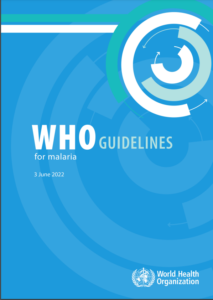
WHO regularly convenes the world’s leading malaria experts to review available evidence and advise on recommendations to control and eliminate malaria. The consolidated Guidelines for malaria, launched in February 2021, bring together – for the first time – all of the Organization’s current recommendations for malaria in one user-friendly online resource.
Note, this includes updated WHO recommendations for malaria chemoprevention among children and pregnant women.
Through the MAGICapp platform you will find:
- All WHO evidence-based recommendations for malaria prevention (vector control and preventive chemotherapies) and case management (diagnosis and treatment); recommendations for elimination settings are in development.
- Links to other resources, such as guidance and information on the strategic use of information to drive impact; surveillance, monitoring and evaluation; operational manuals, handbooks, and frameworks; and a glossary of terms and definitions.
These consolidated guidelines replace 2 guideline documents on the WHO website: the Guidelines for the treatment of malaria, third edition and the Guidelines for malaria vector control. As new evidence becomes available, the recommendations will be reviewed and updated, where appropriate, using WHO’s transparent and rigorous guideline development process.
Clear, evidence-informed recommendations are designed to guide countries as they develop national malaria strategic plans; they support decisions around “what to do”. WHO also develops implementation guidance such as operational and field manuals to advise countries on “how to” deliver the recommended tools and strategies.
The consolidation of WHO’s malaria guidelines is one of a number of actions the Organization has undertaken in recent years to make its guidance more accessible to end users in malaria-endemic countries. The overall aim is to deliver timely, high quality recommendations through processes that are more transparent, consistent, efficient and predictable.